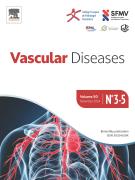Prognostic factors of acute pulmonary embolism in a Sub-Saharan African country: The case of Togo - 23/01/25
 , Yaovi Mignazonzon Afassinou b, Gernique Nkuitché a, Mohamed Kpélafia a, Komlavi Yayehd a, Wiyao Dieudonné Kaziga a, Ekpé Togbossi a, Tcha Tchérou c, Borgatia Atta d, Mario Bakai c, Machihude Pio c, Soodougoua Baragou b, Findibé Damorou a
, Yaovi Mignazonzon Afassinou b, Gernique Nkuitché a, Mohamed Kpélafia a, Komlavi Yayehd a, Wiyao Dieudonné Kaziga a, Ekpé Togbossi a, Tcha Tchérou c, Borgatia Atta d, Mario Bakai c, Machihude Pio c, Soodougoua Baragou b, Findibé Damorou aAbstract |
Background |
Pulmonary embolism (PE) is a serious and frequently encountered disease whose incidence increases with age. Its prevalence, etiological factors and mortality are known in the literature, particularly in Togo. However, factors associated with worse outcomes of PE have not yet been studied in our setting. This study was therefore designed to investigate the factors associated with worse outcomes in PE.
Methods |
We conducted a 4-year retrospective, descriptive and analytic study from January 1st of 2019 to December 31st, 2022, including records of patients admitted in cardiology departments of Campus of Lomé and Sylvanus Olympio University hospitals for PE confirmed at the CT pulmonary angiography.
Results |
In total, 232 cases of PE were included in the study. The mean age of patients was 56.52±15.04years and sex ratio (H/F) of 0.47. Low-risk PE accounted for 22%, intermediate-risk PE for 66.4% and high-risk PE for 11.6%. The average duration prior to admission after symptom onset was 3±1.2days. In-hospital mortality was 8.7%. Mortality was significantly associated with age≥60years, duration prior to admission greater than 72hours, sPESI score≥2, presence of right intracavitary thrombus and shock status.
Conclusions |
PE remains a serious and highly fatal pathology in Lome. Factors associated with in-hospital mortality include advanced age, long duration prior to admission, presence of intracavitary thrombus, high sPESI score and shock on admission.
Le texte complet de cet article est disponible en PDF.Keywords : Pulmonary embolism, Mortality, Prognostic factors, Togo
Plan
Bienvenue sur EM-consulte, la référence des professionnels de santé.
L’accès au texte intégral de cet article nécessite un abonnement.
Déjà abonné à cette revue ?

